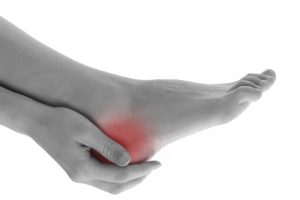I’ve Got ‘Plantar Fasciitis’ – Should I Get An Injection?
As a podiatrist clients often ask if they should get an injection for Plantar Fasciitis. So we thought it would be a good idea to bust a few myths and bring a bit of clarity to ‘Plantar Fasciitis’ and the use of cortisone and steroid injections.
Heel pain is one of the most common conditions that presents to a podiatrists office. Traditionally heel pain has been broadly diagnosed as Plantar Fasciitis.
But is your heel pain really Plantar Fasciitis?
The suffix ‘itis’ (as in Plantar Fasciitis) implies inflammation of the fascia. We now know that inflammation is often not the only the cause of pain or dysfunction in the plantar fascia.
So, according to the most recent research, we know that the using the term ‘Plantar Fasciitis’ for all plantar heel pain is, at best, likely misleading and, at worst, just incorrect.
A more accurate description of your heel pain symptoms would be either ‘Plantar Fasciopathy‘ or Plantar Heel Pain (PHP) to describe pain in the heel.
These terms encompasses a variety of pathological and anatomical features relating to heel pain. These include plantar fascia inflammation, degeneration or thickening, heel fat pad pathology, nerve irritation, and heel spurs.
Additionally, individuals with Plantar Heel Pain (PHP) may present with impairments in foot function, ankle or big toe range of motion and lower leg/foot muscle performance. Even factors like stress, depression and obesity can have impact.
Now heel pain will typically fall into two categories either reactive or degenerative.
REACTIVE implies an acute response to a stimulus such as changing your shoes, starting a new physical activity like boot-camp or joining the gym. This can be inflammatory. DEGENERATIVE refers to the slow breakdown of fascial tissue over time.
Now that we have a better understanding of what is actually happening in our fascia and heel pain, we can devise a plan to appropriately treat it.
Historically, cortisone has been used as a steroid injection to treat inflammation.
But does the science support this?
Well the results of 2 systematic reviews (here and here) failed to find any evidence showing any substantial clinical benefit of using cortisone (steroid injection) in patients with heel pain / plantar fasciitis.
Not only that, the potential harms associated with having a steroid injection weren’t great. Complications such as injection-site pain, infection, subcutaneous fat atrophy, skin pigmentation changes, plantar fascia rupture, peripheral nerve injury, and muscle damage were reported.
As a result any perceived benefit associated with cortisone injections for heel pain really does not offset the risk for adverse outcomes, including long-term disablement.
So where does this leave us?
Well since we know that Plantar Heel Pain is not always inflammatory AND the potential benefits of using cortisone don’t offset the risks then typically you should NOT have an injection in the vast majority of cases!
For some simple tips the help ease your heel pain click here!
What have you read about this elsewhere? Leave a comment and let us know what you think!
More blog posts…






I had cortisone in my heel- most excruciating pain I’ve ever had. It was effective for a month then back to original condition. I rolled my foot on a rolling pin daily for several weeks and the pain went away eventually. I’ve been pain-free for 18 months now.
Jan, this is a common experience where the cortisone suppresses the inflammation and the heel ‘feels better’ for around 4-6 weeks. Then the effect can wear off and the pain returns. Often worse than before. Using the rolling pin and stretching the fasical tissues and small muscles of the foot can be very beneficial. Yes it takes time but as you have experienced get it right and you can be pain free. Enjoy your feet working well.
How to stop Plantar Fascistic pain while wearing heels?
Lisa, the key to addressing fascia problems is to find out why the fascia is being irritated in the first place (often mechanical) and by addressing these factors the body can then do its job of repairing the tissue. Cortisone can suppress inflammation but inflammation is not the only factor in heel pain. Also with the wearing of heels calf muscle stretching can be incredibly helpful for heel pain. The best thing to do is to find out why your feet are putting excessive stress on the fascia in the first place as until this is addressed it can be a long road to recovery.